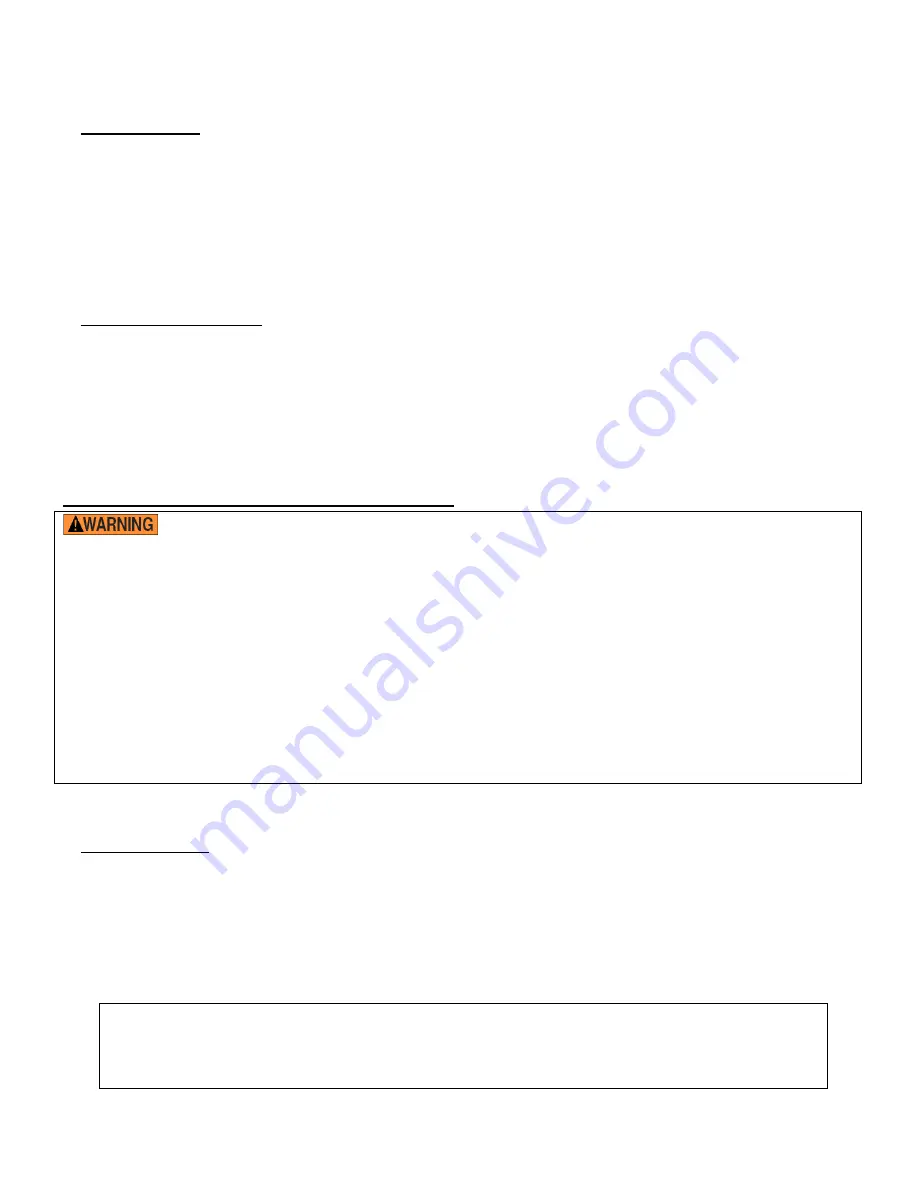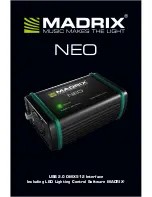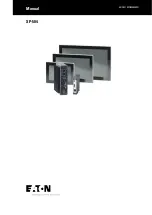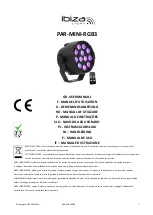
Rev. 7/14/2016
PMPS, MANUAL
Copyright 2016 Vestil Manufacturing Corp.
Page 18 of 22
5. Inspect the O-rings and the PTFE washer (polytetrafluoroethylene). If either component is damaged (for
example, torn or cut) replace it.
6. Reinstall the valve. The valve should be tightened to approximately 20 ft.-Ib. of torque.
VELOCITY FUSE:
There is a brass velocity fuse with a stainless steel spring in the base of each cylinder. If a fitting leaks or a hose is
ruptured, the platform lowers more rapidly. If the rate of descent exceeds the preset speed, the Velocity Fuse will shut.
As long as the fuse is shut oil cannot flow and the forks will remain stationary until pressure is reestablished. This safety
feature reduces the possibility of personal injury or damage to the pallet handler (or load) that could result if the forks
suddenly fall.
If air enters the hydraulic system, the velocity fuse might activate although no failure occurs. To reset the velocity
fuse, activate the pump by jogging the
UP
button. Immediately after resetting the velocity fuse, lower the forks and
remove the load. Then, cycle the carriage (raise the forks all the way to the top of the mast and back down) several
times to purge air from the system.
AIR BLEED PROCEDURE:
If the forks descend very slowly or fail to lower at all, air probably is trapped in the hydraulic circuit and must be bled
from the system. The PMPS has a “bleeder” screw at the top of the cylinder. To bleed air from the hydraulic circuit,
follow these directions.
1.) Completely unload the forks.
2.) Loosen the bleeder screw at the top of the cylinder by giving it approximately 1/4 to 1/2 turn to allow trapped air to
escape. Jog the motor to push air out of the system.
4.) When the cylinder is free of air only clear hydraulic fluid will flow from the bleeder screw opening. When you observe
only oil flowing from the bleeder, retighten the bleeder screw.
Battery Charger Operation (DC units only):
Working on lead-acid batteries is dangerous. Batteries contain sulfuric acid and produce explosive gases. A
battery explosion could result in loss of eyesight or serious burns.
DO NOT smoke near the battery or expose the battery to a spark or flame.
ONLY charge batteries
in
dry, well-ventilated
locations.
DO NOT lay tools or metallic items on top of a
b
attery. NEVER touch both terminals simultaneously! Remove personal
items such as rings, bracelets, necklaces, and watches. A battery can produce enough voltage to weld jewelry to metal.
Always have plenty of fresh water and soap nearby in case contact with battery acid occurs.
Operating the battery with low voltage can cause premature motor contact failure.
The charger is equipped with an external
ground wire (small green wire). During installation the charger
must be grounded to the
equipment which it is connected
to. Be sure this wire is always connected to the chassis,
frame, or other metallic surface considered
to be ground.
Confirm that all battery connections are sound and clean. Remove all accumulated deposits on the terminals.
Replace defective electrical cords and wires immediately.
DO NOT use the charger if the flanged inlet is damaged.
DO NOT connect the charger to a damaged extension cord.
Every DC powered
PMPS
is equipped with an onboard battery charger with a flanged electrical inlet.
The charger is current
limited and will not exceed its rated output even if loads are placed on the battery while it is charging. The charger fuse will blow if it
is connected in reverse polarity.
To charge the battery:
1.) Plug the charger into a 115V,60 Hz receptacle by connecting the flanged inlet on the charger to an extension cord
. Plug the other
end of the cord into a wall socket.
Use a short, thick extension cord.
2.) When properly connected, the charge LED will indicate the status of charge current flowing to the battery.
If only the red LED is on, the charger is providing full output to the battery.
If both the red and green LED's are on, the charger is "topping off"
the
battery.
When only the green LED is on, the unit is providing a "float" (maintenance) charge.
DO NOT leave the charger on for long periods after the battery is fully charged.
3.) Unplug the charger before using the lifter. Failure to do so could cause damage to cords, receptacles, etc.
TROUBLESHOOTING--
If the charger does not work:
1) Make sure all battery connections sound.
2) Confirm that the AC power source (e.g. wall socket) is supplying power.
3) Examine the fuse (see p. 7). Replace only with a fuse having the same rating as the original fuse.
4) Determine battery condition. It may take some time before current begins to flow through a highly sulfated battery.





































